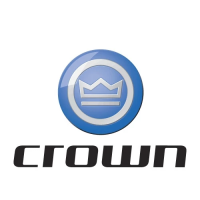203
M4.6-1055-001
ELECTRICAL
Battery
Battery
The care and maintenance of the battery is very impor-
tant to obtain efficient truck operation and maximum
battery life.
Gases produced by a battery can be explosive. Do not
smoke, use an open flame, create an arc or sparks in
the vicinity of the battery. Ventilate an enclosed area
well when charging.
Batteries contain sulfuric acid which may cause severe
burns. Avoid contact with eyes, skin or clothing. In case
of contact, flush immediately and thoroughly with clean
water. Obtain medical attention when eyes are af-
fected. A baking soda solution (one pound to one gal-
lon of water) applied to spilled acid until bubbling stops,
neutralizes the acid for safe handling and disposal.
Leakage voltage from battery terminals to battery case
can cause misleading trouble symptoms with the truck
electrical system. Since components of the truck elec-
trical system are insulated from truck frame, leakage
voltage will not normally affect truck operation unless a
short circuit or breakdown of circuit wire insulation to
truck frame occurs.
A voltage check from battery connector terminal to bat-
tery case should indicate near zero volts. Typically the
sum of the voltages at both terminals will equal battery
volts. This leakage will discharge the battery. As bat-
tery cleanliness deteriorates, the usable charge of the
battery decreases due to this self discharge.
Although a leakage voltage reading of zero volts may
not be possible, a cleaner battery will have more us-
able charge for truck operation and not affect operation
of electronic devices on the unit.
Safety Rules
Wear protective clothing such as, rubber apron,
gloves, boots and goggles when performing any main-
tenance on batteries. Do not allow electrolyte to come
in contact with eyes, skin, clothing or floor. If electrolyte
comes in contact with eyes, flush immediately and thor-
oughly clean with water. Obtain medical attention im-
mediately. Should electrolyte be spilled on skin, rinse
promptly with clean water and wash with soap and wa-
ter. A baking soda solution (one pound to one gallon of
water) will neutralize acid spilled on clothing, floor or
any other surface. Apply solution until bubbling stops
and rinse with clean water.
• Keep vent plugs firmly in place at all times except
when adding water or taking hydrometer readings.
• Do not bring any type of flame, spark, etc., near the
battery. Gas formed while the battery is charging,
is highly explosive. This gas remains in the cells
long after charging has stopped.
• Do not lay metallic or conductive objects on bat-
tery. Arcing will result.
• Do not allow dirt, cleaning solution or other foreign
material to enter cells. Impurities in electrolyte has
a neutralizing effect reducing available charge.
• If battery repair is planned, follow the battery man-
ufacturer's instructions concerning repair practices
and procedures.
Checking
Battery electrolyte level should be checked before
each charge of the battery. The level should be main-
tained at 13 mm (0.5 in) above plates or just below
lower lip of the filler hole at all times. If low, add distilled
water or approved local supply (consult battery manu-
facturer) at the end of a charge cycle. Do not overfill.
For maximum battery life, specific gravity readings
should be taken daily on a pilot cell and recorded. A
different pilot cell should be selected on a monthly ba-
sis with readings taken on all cells at semi annual or
annual intervals. Do not take specific gravity readings
immediately after adding water. Water and electrolyte
must be thoroughly mixed by charging before a reliable
reading can be taken. Normal full charged specific
gravity should be between 1.265 and 1.285.
Crown 2007 PF15687-1

